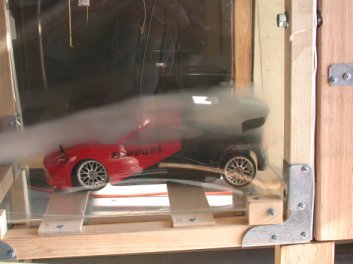Testing
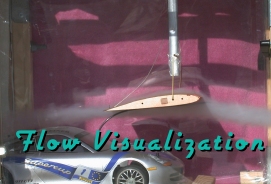
[ Lift Analysis ] [ Flow Visualization ]
We did tests on flow visualization largely because we could. Also, while lift analysis produces results in data tables, flow visualization allows observers to actually see the phenomena taking place in the wind tunnel.
About the easiest way of this was by the use of smoke streams. Other methods include yarn tufts across the surface, oil patterns, or pressure sensitive paint, all of which have their advantages. However, smoke is a good tool for following streamlines throughout the entire test section and is fairly easy to set up and use. Our first smoke generator was that of a model train. We powered it with a 9vDC transformer and it drew approximately 150-200mA. However, it produced very little smoke. The smoke that was produced lost its laminar flow in the wake of the smoke tube and became nearly invisible. Our instructor recommended purchasing a party fog machine and offered to pay for it if she could have it once the project was complete. Since we didn't really have a need for the fog machine (well, a productive need anyways), we bought one from Party City. The unit produced an incredible amount of smoke and forced us to move all remaining flow experiments so that the exit of the wind tunnel pointed out of the garage, a result of learning from our mistakes.
Below are several pictures showing our trials.
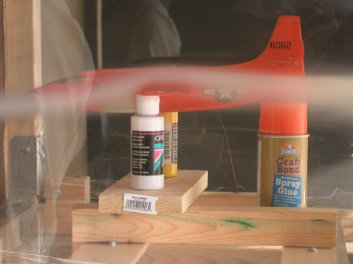
Experiments with Bell X-1.
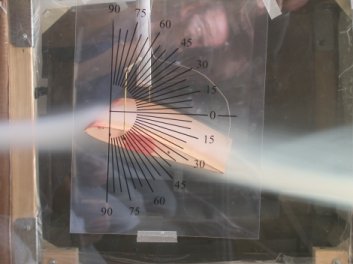
Wing approaching a stall.
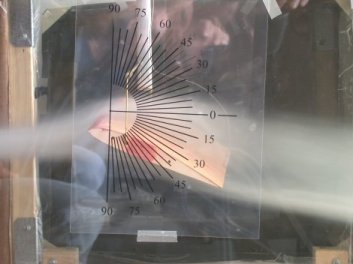
Wing stalled.
